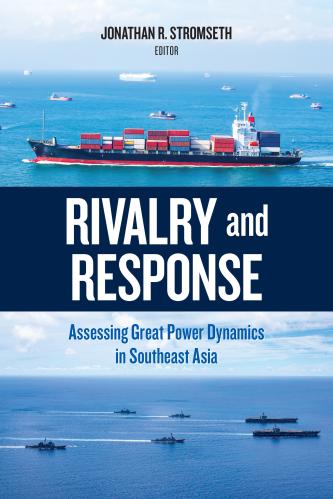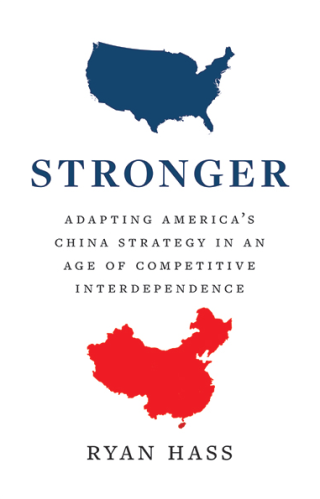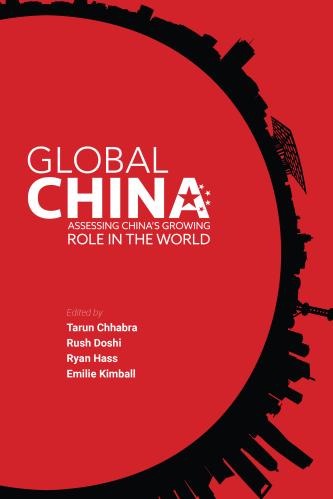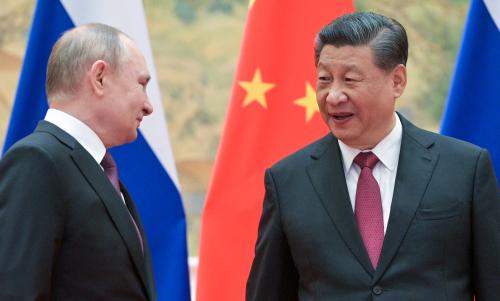The International Institute for Strategic Studies’ annual Shangri-La Dialogue in Singapore provides the closest thing to an X-ray of the strategic situation in the Indo-Pacific. The convening brings together defense leaders, diplomats, strategic thinkers, journalists, and business leaders for examination of the most pressing challenges to regional security and prosperity. In the 2022 edition this past weekend, through two days of intensive discussions among nearly 600 delegates from 59 countries, including defense chiefs from the United States, China, Australia, Japan, South Korea, France, Fiji, and Association of Southeast Asian Nations (ASEAN) members states, a picture emerged of the strategic situation in Asia.
A consistent through-line of the dialogue was the cascading challenges confronting the region. Participants spoke of the dangers facing their peoples from energy and food insecurity, climate-induced crises, and the scourges of COVID-19. In this context, virtually every defense leader stressed the need to find ways to pull China into global and regional efforts to address these systemic challenges.
Participants also deliberated extensively on the risks of conflict in the Indo-Pacific. They worked to identify lessons to be drawn from Russia’s invasion of Ukraine for protecting the peace in Asia. Ukrainian President Volodymyr Zelenskyy’s virtual participation in the conference drove home the life-and-death stakes of confronting this question squarely. Zelenskyy offered a powerful call for countries to band together to defend principles of sovereignty and peaceful resolution of disputes and to oppose the normalization of large countries imposing their will on smaller neighbors.
It was against this backdrop that American and Chinese leaders offered their respective visions for the future of the region. Each country’s representative commanded the stage for a separate one-hour block, where they each delivered speeches and answered questions from delegates. Broadly speaking, U.S. Defense Secretary Lloyd Austin articulated America’s positive vision for the region, while his Chinese counterpart, Defense Minister Gen. Wei Fenghe, focused on how China will be important to the future of Asia and why it would be a mistake for any country to cross China now.
America’s argument
Secretary Austin’s presentation did not dwell on China. Instead, he emphasized how the United States views the Indo-Pacific as the strategic center of gravity for American interests in the 21st century. He spoke about the Department of Defense’s determination to remain at the bleeding edge of technological innovation, including through its largest-ever budget request for research and development. These investments are enabling progress in fielding new capabilities around stealth aircraft, long-range fires, unmanned platforms, and integrated sensors. Austin explained that the U.S. also is pooling resources and capacity with allies and partners to accelerate innovation, including by linking up defense industrial bases, integrating supply chains, and co-producing new and emerging technologies.
Austin delivered a confident reminder the United States remains the world’s largest military force, endowed with the most significant resources and the deepest partnerships with other capable powers. Austin repeatedly invoked the “power of partnerships” to serve as force multiplier for tackling challenges. He explained that the more China pushes boundaries in the region, the more the U.S. and its partners will tighten their bonds to deal with Chinese assertiveness. Austin seemed to want to dispel any notions that China would own the future and the United States was a fading power.
At the same time, Austin also demonstrated awareness of the interests of his audience. He did not attempt to denigrate China’s achievements. While he was direct in criticizing certain Chinese behaviors, he also advocated for maintaining open channels with Beijing to manage tensions. He studiously avoided any ideological framing of competition with China as a contest between democracies versus autocracies. He did not question any countries’ relationship with China or urge countries to resist Chinese entreaties. Instead, he emphasized that America’s goal is to protect each country’s ability to pursue its interests as it defines them; Washington will not force countries to choose between the United States and China.
Austin also went to pains to emphasize that the U.S. approach to Taiwan is guided by the broadly shared goal of preserving peace and stability in the Taiwan Strait. Austin read verbatim America’s longstanding policy on Taiwan, both in his speech and in the Q&A that followed. He signaled that Washington does not seek confrontation with China over Taiwan and does not support Taiwan independence. Austin seemed to suggest that the ball is in China’s court to mellow its pressure on Taiwan if it wishes to lower cross-Strait tensions.
China’s case
Chinese Defense Minister Gen. Wei Fenghe’s presentation was more pointed by comparison, even as his delivery was relatively more relaxed and engaging than Austin’s. Wei stressed that China’s rise and its continued development cannot be stopped; China cannot be isolated or excluded from the region.
Wei warned that American attempts to form exclusive blocs (e.g., through the Quadrilateral Security Dialogue or the AUKUS pact) would split the region and undermine the interests of all. He appealed to participants to resist American plans to seek to encircle and contain China. Later, one of Wei’s deputies amplified the message by warning assembled media, “The United States has already turned the Middle East and Europe into a mess, does it want to mess up the Asia-Pacific next?”
Wei’s presentation offered a bread crumb trail of China’s anxieties and insecurities. He opened the speech by declaring that China’s record on COVID-19 was stellar and that its economy was going from strength to strength (two assertions that would appear dubious in the current moment for consumers of international news). Later, Wei identified a series of security challenges confronting China, including Taiwan, the South China Sea, North Korea, Ukraine, and the formation of exclusive groupings that challenged China’s rise. In his telling, the U.S. was the malignant actor standing in the shadow of each of these challenges.
Wei also invoked martial language at times, especially in his comments on Taiwan. He warned that China would “crush” any efforts to achieve Taiwan independence. He warned that if others want confrontation, the People’s Liberation Army would fight to the end without flinching. At the same time, Wei also paired his bluster with assurances that “peaceful unification” remains China’s utmost goal on Taiwan and that China hopes for “sound, steady development” of relations with the United States.
Overall, Wei’s presentation did not break much new ground. His warnings were familiar to anyone who has been in private conversations with Chinese officials or experts over the past year. The publicly-expressed pointedness of some of Wei’s warnings seemed to reflect a worry that Washington is not heeding the strength of China’s concerns and that a more forceful articulation of them may be needed to get the Biden administration’s attention.
Intensifying rivalry
Some of Wei’s worries about U.S. capacity to coordinate efforts with allies and partners in Asia may also be informed by three additional factors. First, the Biden administration likely has exceeded Beijing’s expectations. After the Trump era, Beijing might have lulled itself into believing its own narrative about America’s overall decline and its diminishing capacity to lead on the world stage. Second, many Chinese analysts assumed that Russia’s invasion of Ukraine would divert U.S. focus toward Europe and relieve strategic stress on China. Those expectations have not borne out. Third, China’s leaders and leading thinkers likely have been agitated by the pattern of senior American officials visiting Asia and engaging with Asian counterparts, but bypassing China. In the past weeks alone, President Joe Biden, Vice President Kamala Harris, Secretary of State Antony Blinken, Austin, Commerce Secretary Gina Raimondo, U.S. Trade Representative Katherine Tai, and many other senior officials have been interacting intensively with their Asian counterparts. They have not been visiting China or interacting with senior Chinese officials, though. This pattern owes in part to China’s status as a de facto closed country due to COVID-19 controls. Nevertheless, the intensity of Washington’s attention on Asia and its relative de-prioritization of direct interaction with Chinese leaders likely has fed a sense of embattlement and encirclement in Beijing.
If the Shangri-La Dialogue provided an X-ray of the current strategic landscape in Asia, the diagnosis would seem to point to compounding problems and concerns in the region, with intensifying U.S.-China rivalry overhanging all of them. Reflecting on these broader dynamics, a prominent Singaporean thinker shared with me and several others advice for Washington and Beijing. He said the region will not give its loyalty to the United States or China. As such, both sides should dial down their insults and angry words toward the other. The U.S. should take seriously China’s warnings about its “red-line” concerns. At the same time, China should not underestimate America’s resilience, strength, and appeal.
Such advice will not resolve underlying tensions animating the U.S.-China relationship, but it could help prevent a strained situation from growing sharper and more confrontational.
-
Acknowledgements and disclosures
The author wishes to express gratitude to the International Institute for Strategic Studies for convening the Shangri-La Dialogue and including him in it as a delegate. He also wishes to thank Joseph Liow and the S. Rajaratnam School of International Studies (RSIS) for facilitating a Brookings delegation’s interaction with a diversity of Singaporean thought leaders.
The Brookings Institution is committed to quality, independence, and impact.
We are supported by a diverse array of funders. In line with our values and policies, each Brookings publication represents the sole views of its author(s).










Commentary
America and China present dueling narratives at Shangri-La Dialogue
June 14, 2022